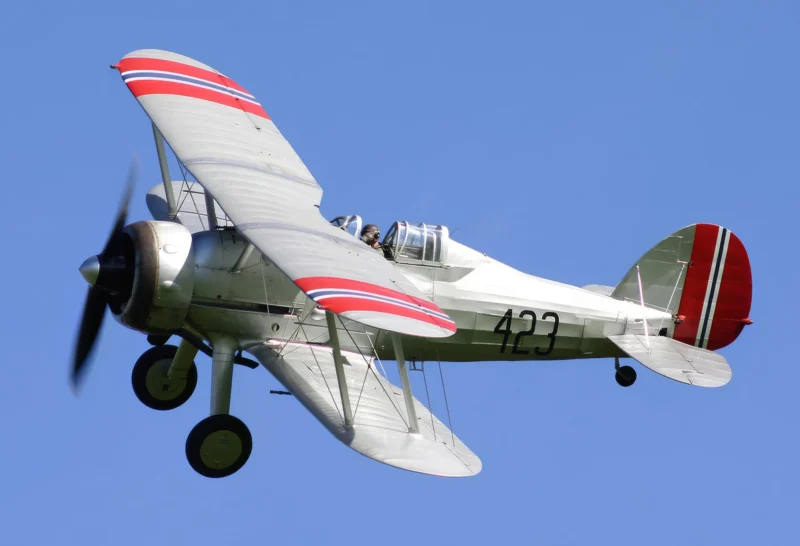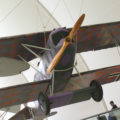
Gloster Gladiator | |
|---|---|
| Country | UK |
| Role | Fighter aircraft |
| First flight | 12 September 1934 |
| Built | 747 |
The Gloster Gladiator is a British biplane fighter. It was used by the Royal Air Force (RAF) and the Fleet Air Arm (FAA) (as the Sea Gladiator variant) and was exported to a number of other air forces during the late 1930s.
Source: Gloster Gladiator on Wikipedia
| Gloster Gladiator MK.I | |
|---|---|
| Photographers | Unknow |
| Localisation | Unknow |
| Photos | 58 |
See also:
The Gloster Gladiator was a British biplane fighter that served in various air forces during the late 1930s and early 1940s. It was the last biplane fighter of the Royal Air Force (RAF) and the Fleet Air Arm (FAA), and was soon outclassed by more modern monoplane fighters. The Gladiator was developed from the Gloster Gauntlet, and had a single-strut wing design, a retractable landing gear, and a Bristol Mercury radial engine. It was armed with four machine guns, two in the fuselage and two under the lower wings. The Gladiator saw combat in many theatres of the Second World War, including France, Norway, Greece, Malta, the Middle East, China, Finland, and Iraq.
It also served as a naval fighter, known as the Sea Gladiator, and operated from aircraft carriers and land bases. The Gladiator was praised for its manoeuvrability and stability, but suffered from low speed and limited range. It was gradually replaced by newer fighters such as the Hawker Hurricane and the Supermarine Spitfire. The Gladiator ended its RAF service life in a meteorological role during 1944. One surviving aircraft is currently being preserved in flying condition at The Shuttleworth Trust in Bedfordshire.
Views : 1064





















